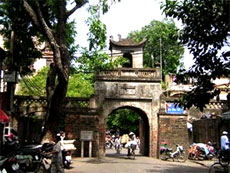The 1,000 year-old capital of Hanoi and its distinctive features took centre stage at a symposium held in Philadelphia, the US, on March 28.

The symposium formed part of an annual meeting of the Association for Asian Studies (AAS), which is open to all researchers and those who are interested in Asia.
Among Vietnamese researcher participants, Truong Quang Hoc from the Vietnam Association for Conservation of Nature and Environment discussed how Hanoi’s ecological system has changed over its 1,000-year course of development.
Hoc highlighted the rivers and lakes as the most vital feature of Hanoi, describing them as the city’s “lungsâ€-- an inseparable part of the capital’s socio-economic and cultural development.
Discussing the extremely important role such bodies of water play, the researcher reflected on the fact that they numbered 600-750 in the early 20th century, and have dwindled to just 44 according to a 2002 assessment. And many of those are heavily polluted, threatening the city’s sustainable development.
Chu Tuyet Lan from the Han-Nom Institute introduced to the participants the development history of Thang Long-Hanoi, stressing that though the capital city of Vietnam had been changed several times, Hanoi remains the country’s political, economic and cultural centre, closely binding with the nation’s development course.
Vietnamese researchers, both professional and amateur, delivered presentations on the age-old features of Thang Long-Hanoi in terms of culture, lifestyle, language, and architecture at the symposium, giving the participants an interesting insight into the ancient Asian capital over its 1,000 years of growth.
As usual, this year’s AAS meeting, held from March 25-28, provided a venue for its members to keep each other updated on their studies in a wide range of fields concerning Asia. The AAS currently has 7,000 members.